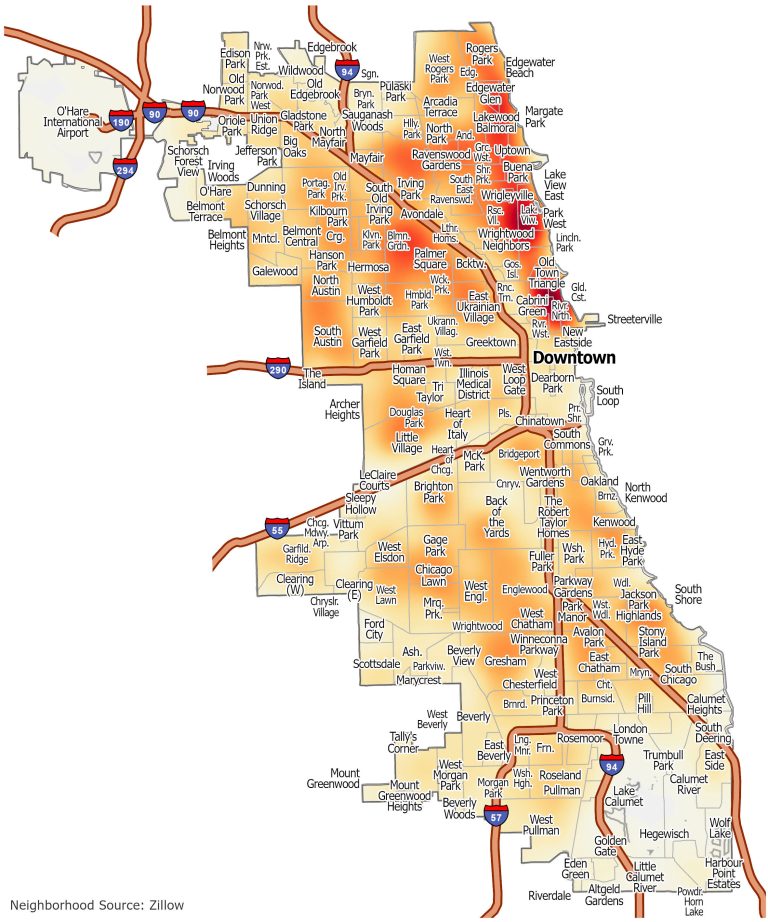Analyzing The Recent Dip In Crime In Chicago: Causes And Concerns

Table of Contents
Chicago has recently experienced a notable dip in its crime rates, a phenomenon sparking both celebration and cautious optimism. This article analyzes the potential causes behind this decrease, while also highlighting lingering concerns and the need for continued vigilance in addressing Chicago's complex crime landscape. Understanding the factors contributing to this change is crucial for developing sustainable strategies to ensure long-term safety and security for the city. This analysis will delve into the positive trends while acknowledging the challenges that still lie ahead in the ongoing fight against Chicago crime.
Potential Causes of the Recent Crime Decrease in Chicago
Several factors may have contributed to the recent decrease in Chicago crime statistics. While no single cause offers a complete explanation, a combination of improved policing strategies, economic factors, and community initiatives likely played a significant role.
Increased Police Presence and Strategies
Increased police visibility and proactive policing strategies have demonstrably impacted crime rates in certain areas. This includes:
-
Increased patrols in high-crime areas: Targeted deployments of officers to areas with historically high crime rates have likely deterred criminal activity and increased response times to incidents.
-
Community policing initiatives: Building stronger relationships between police officers and community members fosters trust and encourages information sharing, leading to improved crime prevention.
-
Effectiveness of crime-reduction strategies: Technologies like ShotSpotter, which quickly pinpoint the location of gunfire, and increased surveillance camera usage have aided in quicker response times and apprehension of suspects.
-
Changes in police training and deployment: Improved training in de-escalation techniques and community engagement has likely fostered better relations with residents and improved overall effectiveness.
-
Successful Strategies Examples: The implementation of specialized units focusing on gang violence reduction, coupled with improved data analysis to anticipate crime hotspots, have shown promising results in specific neighborhoods.
Economic Factors and Job Growth
Economic improvements within Chicago might correlate with reduced crime rates. Several factors contribute to this potential link:
-
Correlation between economic improvements and reduced crime: Studies consistently demonstrate a correlation between economic opportunity and reduced crime rates. As unemployment decreases and economic conditions improve, individuals may have fewer incentives to engage in criminal activity.
-
Impact of job creation programs: Initiatives aimed at creating jobs, particularly for at-risk youth, can divert individuals from criminal paths towards productive employment.
-
Changes in poverty rates and social support programs: Reductions in poverty and increased access to social support programs can provide necessary resources and stability, potentially lessening the likelihood of criminal behavior.
-
Economic Indicators and Crime Statistics: Analyzing the correlation between unemployment rates, poverty levels, and crime statistics over time reveals valuable insights into the potential impact of economic factors on crime. Data shows a noticeable reduction in crime alongside improvements in employment rates.
Community Initiatives and Violence Prevention Programs
The active participation of community-based organizations plays a vital role in crime reduction strategies. These initiatives include:
-
Role of community-based organizations: These organizations provide essential support services, mentorship, and conflict resolution programs, thereby fostering safer communities.
-
Impact of youth outreach programs and violence intervention strategies: Early intervention programs targeting at-risk youth have proven effective in preventing involvement in crime and violence.
-
Effectiveness of restorative justice initiatives: Restorative justice practices, focusing on repairing harm caused by crime, can lead to reduced recidivism and stronger community bonds.
-
Examples of successful community programs: Neighborhood watch programs, mentoring initiatives, and after-school activities have demonstrably contributed to safer neighborhoods and improved community relations. Data indicates that areas with strong community engagement exhibit lower crime rates.
Concerns and Challenges Remaining in Chicago's Fight Against Crime
Despite the encouraging decrease in crime, several challenges persist in Chicago's ongoing fight against criminal activity.
Data Reliability and Reporting Biases
Accurate and reliable data is crucial for effective crime analysis. However, challenges exist:
- Inconsistencies in crime data reporting: Variances in reporting methods and data collection across different police districts can lead to inconsistencies in overall crime statistics.
- Potential underreporting of certain types of crime: Some crimes, particularly those involving domestic violence or sexual assault, may go underreported due to various factors, including fear of reprisal or lack of trust in law enforcement.
- Challenges in accurately measuring the effectiveness of crime-reduction strategies: Determining the precise impact of specific interventions on crime rates requires robust data analysis and careful consideration of various confounding factors.
- Limitations in data collection methods: Traditional methods of crime reporting may not fully capture the complexities of modern crime, including cybercrime and other emerging threats.
Underlying Social Issues and Systemic Inequality
Addressing the root causes of crime requires tackling deeply ingrained social issues:
- Persistent effects of poverty, inequality, and lack of opportunity: These factors create environments where individuals are more likely to engage in criminal behavior.
- Role of systemic racism and its impact on crime rates: Systemic racism and biases within the criminal justice system disproportionately impact communities of color, exacerbating existing inequalities and contributing to higher crime rates in certain areas.
- Need for long-term solutions addressing root causes of crime: Sustainable crime reduction requires a long-term commitment to addressing underlying social issues, including poverty, lack of educational opportunities, and inadequate access to healthcare.
- Importance of addressing issues like access to education and healthcare: Investing in education, job training, and healthcare improves the overall well-being of communities, leading to a reduction in crime.
The Potential for Crime Rates to Rebound
The recent decrease in Chicago crime does not guarantee a permanent decline. Several factors could contribute to a resurgence:
- Factors that could lead to a resurgence in crime: Economic downturns, reductions in police funding, or a decrease in community engagement could all potentially contribute to an increase in crime.
- Sustainability of current crime-reduction strategies: The long-term effectiveness of current strategies needs ongoing evaluation and adaptation to ensure they remain effective in changing circumstances.
- Ongoing need for community engagement and resource allocation: Continued community involvement and sufficient resource allocation are vital for maintaining the positive trend.
- Importance of long-term planning and investment: Addressing Chicago crime requires a long-term strategic plan with sustained investment in crime prevention, community development, and social services.
Conclusion
The recent dip in Chicago crime is encouraging, but it's crucial to understand the contributing factors and address remaining concerns. While increased police presence, economic improvements, and community initiatives have played a role, underlying social issues and data limitations require continued attention. Sustaining this positive trend in Chicago crime requires a comprehensive, multi-faceted approach. Further analysis of Chicago crime trends, coupled with ongoing investment in community programs and addressing systemic inequalities, is essential for building a safer and more equitable city for all. Let's continue the conversation and work together to ensure lasting reductions in Chicago crime.

Featured Posts
-
 Hailee Steinfeld Addresses Engagement To Josh Allen A Rare Public Statement
May 28, 2025
Hailee Steinfeld Addresses Engagement To Josh Allen A Rare Public Statement
May 28, 2025 -
 Indiana Pacers Vs Atlanta Hawks Game Details For March 8th Time Tv Stream
May 28, 2025
Indiana Pacers Vs Atlanta Hawks Game Details For March 8th Time Tv Stream
May 28, 2025 -
 40 Li Yaslarinda Ronaldo Formunun Sirri
May 28, 2025
40 Li Yaslarinda Ronaldo Formunun Sirri
May 28, 2025 -
 San Diego Padres Ready To Dominate The Cubs 2025 Home Opener
May 28, 2025
San Diego Padres Ready To Dominate The Cubs 2025 Home Opener
May 28, 2025 -
 Russia Sanctions On The Table As Trump Putin Relationship Worsens
May 28, 2025
Russia Sanctions On The Table As Trump Putin Relationship Worsens
May 28, 2025
